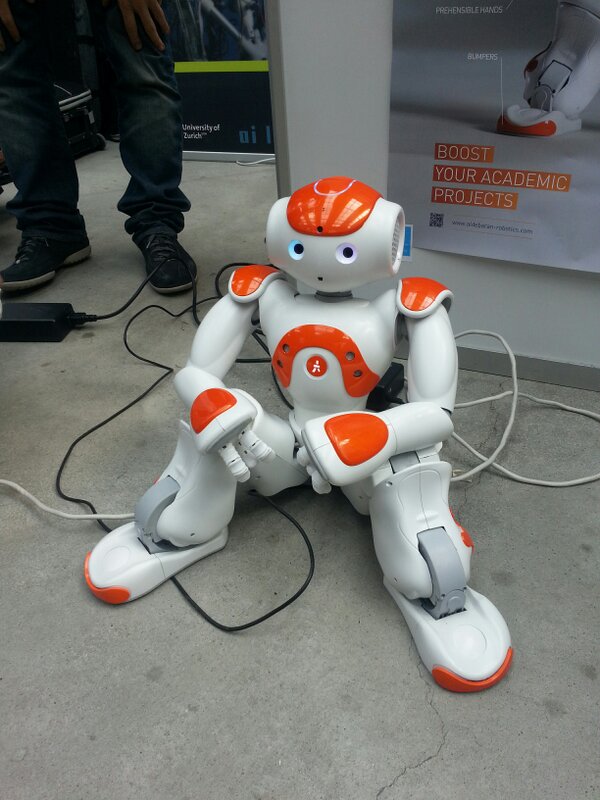You'd do it too if someone had just shown you this, originally posted by Mr. Garcia's confrère, Izabella Kaminska:
From FT Alphaville:
Future jobs and the robot training collective
Phys.org on RoboEarth:
The system has been likened to a social network or a Wikipedia for robots as it allows the knowledge created for one robot to be shared with another robot, anywhere else in the world, via a shared, web-accessible database. When one robot in Germany learns what a toaster is and how it works, it can upload that information into the network. A robot in Japan which has never used a toaster before can then log in and learn how to recognise one.
To enable robots with different bodies and sensors to learn from each other, RoboEarth has an abstraction layer which allows shared information to assume common capabilities across all platforms. This is much like how a desktop operating system like Windows allows the same software to run on many different types of computers.
To allow robots to easily find the knowledge they require, the contents of the RoboEarth database are structured via an ontology. This describes each entry using logic which can be queried automatically and relates connected entries. So an oven will be listed as a type of household appliance and a mars bar as a type of food. …
In the future it is easy to imagine both the current open protocols of RoboEarth educating robots worldwide, as well as a commercial alternative, like an app store, where robots and their owners can buy professionally engineered knowledge off the shelf. This will be a significant step towards the day when your morning orange juice or coffee will be brought by a robot helper, or at least a step towards helping it to tell the difference between the two.This reminded us of another passage in Illah Nourbakhsh’s Robot Futures, a book we’ve been using as a concise guide to understanding recent developments in robotics:
The fundamental connectivity argument for robots will stem from the fact that they will be initially mediocre in their capability to perceive and interact with the physical world. To see the world and understand that perceptual signal as well as possible, robots will have to make use of online resources, which will certainly include visual recognition services and specific databases of objects and information. Think of this as a giant Google search engine in the service of robots rather than people: Robo-Google, organizing the world’s information for mobile robots.Very, very smart stuff.
Robots will want to know how to read traffic lights, how to turn the doorknob of a door they have never encountered, and how to fold or unfold a particular model of baby stroller. They will need to be able to recognize faces, and then register the identity so that they can recall it later.
Once robots collect and store physical-world details using Robo-Google, then there will be a natural progression toward broadly sharing that information among robots. This is interesting in that Internet-based information that is not physical will be smoothly associated with the tangible world. A robot sees you struggling with some luggage at the airport and asks if it can contact you about some new power-assist luggage....MUCH MORE
